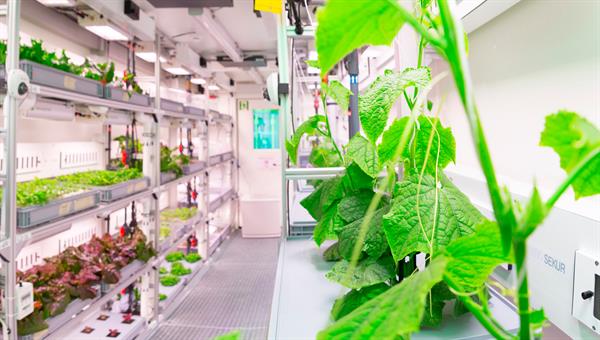RED Digital Cinema has announced its first Android phone featuring the world’s first glasses-free holographic display.
A fun list to check out on people influencing the global discussion on robots: http://www.onalytica.com/blog/posts/robotics-top-100-influencers-brands/ #transhumanism
A list of the top 100 robotics influencers & brands driving the most engagement in 2016, including quotes from the experts!
Global food production is one of the key societal challenges of the 21st century. A growing world population with the simultaneous upheaval caused by climate change demand new methods of cultivating crops in regions with unfavourable climates. A closed greenhouse is a good way of growing food in deserts and low-temperature regions – as would be the case on missions to the Moon and Mars – as it permits harvesting regardless of the weather, the Sun and specific seasons. In a closed greenhouse, water consumption is immensely reduced and there is no need for pesticides and insecticides. This kind of model greenhouse will set off for the Antarctic at the end of 2017 for a year of long-term testing under extreme conditions as part of the EDEN-ISS project. Unparalleled elsewhere in the world, this Antarctic greenhouse was presented to the public for the first time at the Bremen site of the German Aerospace Center (Deutsches Zentrum für Luft- und Raumfahrt; DLR) on 7 July 2017.
“DLR is pursuing application-oriented research within the EDEN-ISS project. Its purpose is to bring fresh impetus to food production on Earth and for human space flight,” says Hansjörg Dittus, DLR Executive Board Member for Space Research and Technology. “In doing so, we are advancing the cause of a key technology that will provide a fresh diet to inhabitants of climatically harsh regions – in our case the Antarctic – as well as to astronauts on future long-term missions.”
A year on the eternal ice.
The Autonomous Car
Posted in robotics/AI, transportation
In contrast to other particles of this type, in which the three quarks perform an elaborate dance around each other, a particle with two heavy quarks is expected to act like a planetary system, where the heavy quarks are like two stars orbiting one around the other, with the lighter quark orbiting around this binary system.
Scientists have detected a new particle at the Large Hadron Collider at Cern.
The discovery will help researchers learn more about the so-called “strong force” which holds the centres of atoms together.
The existence of the new particle was theoretically predicted but this is the first time it has been identified.
“ “I was trained by my coaches that my competitor is my enemy. The truth is, they are my fellow competitors. Without them, there is no competition. We’re striving together.” ”
Yellowstone National Park, which covers parts of Wyoming, Idaho and Montana, lies on top of a supervolcano that could effectively wipe out the United States if it were to explode. The last time it did, 640,000 years ago, it expelled 240 cubic miles (think about that) of rocky debris into the sky.
Early Thursday morning, residents of southern Montana feared the worst when a 5.8 magnitude earthquake shook the region. Though its epicenter was only 230 miles from Yellowstone, the United States Geological Survey (USGS) says the seismic activity was not irregular, and the supervolcano is not expected to erupt anytime soon.
Related: Yellowstone supervolcano hit by hundreds of earthquakes.









